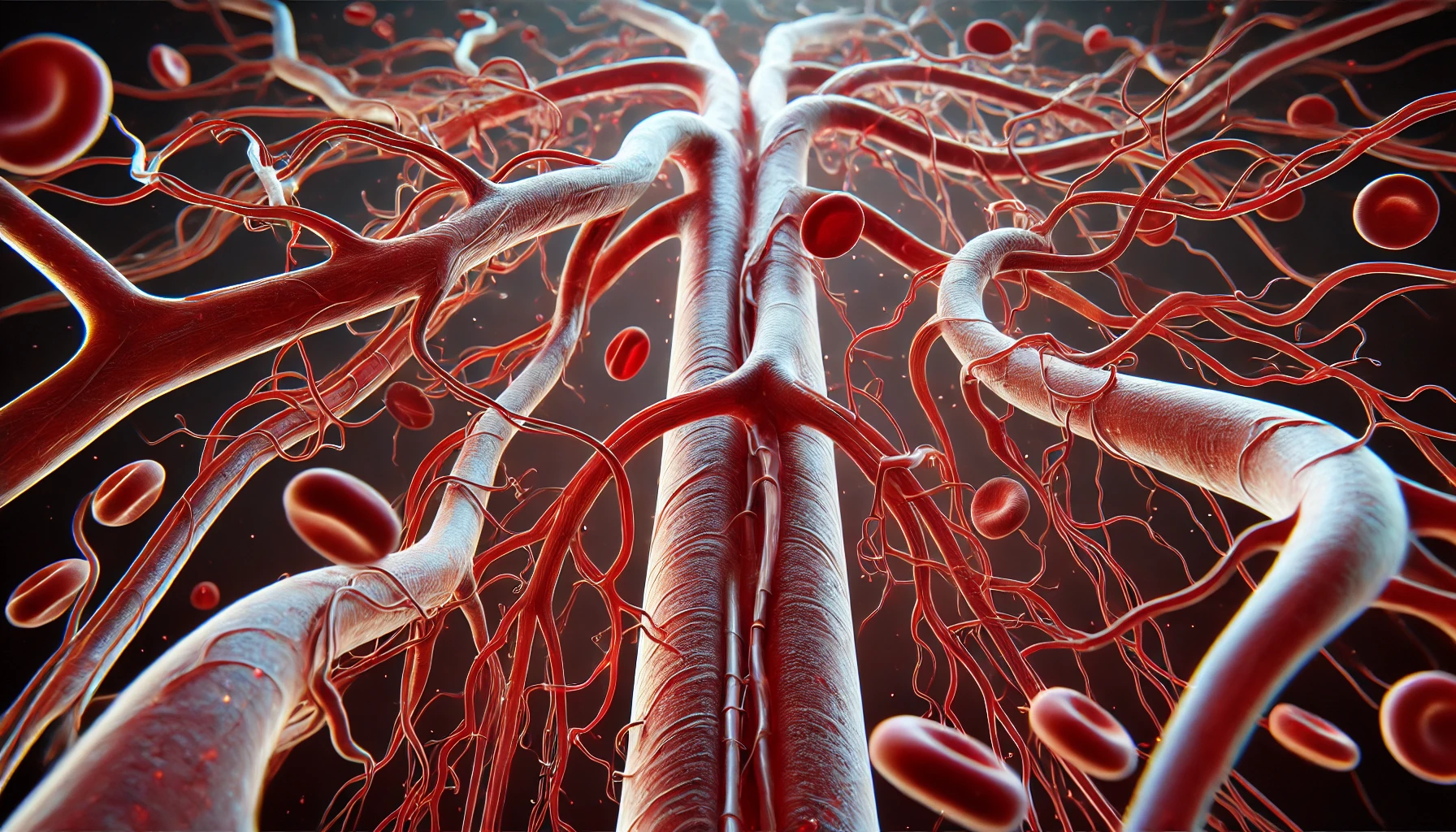Health Notice: This article was written using the Consensus AI Academic Search Engine. It is intended solely for informational purposes and should not be considered medical advice. Always consult a licensed healthcare provider for diagnosis, treatment, or medical guidance. Please refer to the full Disclaimer at the end of this article.
The difference between arteries, veins, and capillaries
Arteries, veins, and capillaries each have unique structural and functional characteristics that enable them to perform their specific roles in the circulatory system. Arteries transport oxygenated blood under high pressure, veins return deoxygenated blood under lower pressure, and capillaries facilitate the exchange of substances between blood and tissues. Understanding these differences is fundamental to the study of human physiology and the treatment of cardiovascular diseases.
Understanding the structure and function of arteries, veins, and capillaries is crucial for comprehending the circulatory system. These three types of blood vessels play distinct roles in the transportation of blood throughout the body.
Arteries
Arteries are blood vessels that carry oxygenated blood away from the heart to the tissues and organs of the body. They are characterized by their thick, elastic walls which are necessary to withstand and maintain the high pressure exerted by the heart’s pumping action. The walls of arteries are composed of three layers: the intima (inner layer), the media (middle layer), and the adventitia (outer layer). The media is particularly thick and contains smooth muscle and elastic tissue, allowing arteries to expand and contract with each heartbeat2 3.
Arteries are further classified based on their size and function:
- Elastic Arteries: These are the largest arteries, such as the aorta, and contain a high proportion of elastic tissue to accommodate the surge of blood from the heart.
- Muscular Arteries: These medium-sized arteries distribute blood to various parts of the body and have a higher proportion of smooth muscle.
- Arterioles: The smallest arteries, which lead directly into the capillary beds, and are crucial in regulating blood flow and pressure through vasoconstriction and vasodilation3.
Veins
Veins are blood vessels that return deoxygenated blood back to the heart. Unlike arteries, veins have thinner walls and larger lumens, as they operate under lower pressure. The walls of veins also consist of three layers, but the media is much thinner and contains less smooth muscle and elastic tissue compared to arteries. This structural difference allows veins to act as reservoirs, holding about 70% of the body’s blood volume2 6.
Veins are equipped with valves that prevent the backflow of blood, ensuring it moves in one direction towards the heart. This is particularly important in the extremities, where blood must travel against gravity. Veins are classified based on their size and location:
- Venules: Small veins that collect blood from capillaries.
- Medium-Sized Veins: These veins contain valves and are often found in the limbs.
- Large Veins: Such as the superior and inferior vena cava, which return blood directly to the heart6.
Capillaries
Capillaries are the smallest and most numerous blood vessels in the body, forming extensive networks that permeate tissues. They consist of a single layer of endothelial cells, which allows for the efficient exchange of oxygen, nutrients, and waste products between the blood and surrounding tissues. The thin walls of capillaries facilitate this exchange by minimizing the distance over which diffusion must occur2 3.
Capillaries connect the arterial and venous systems, forming a bridge between arterioles and venules. The blood flow through capillaries is slow and steady, which is essential for the exchange processes. The pressure in capillaries is significantly lower than in arteries, ensuring that the delicate capillary walls are not damaged3.
Genetic and Functional Differences
Recent research has highlighted that the differences between arteries and veins are not solely due to their physiological roles but are also genetically determined. For instance, the expression of specific markers such as ephrin-B2 in arterial endothelial cells and Eph-B4 in venous endothelial cells indicates a genetic basis for their differentiation. This genetic distinction is crucial for the proper development and function of the vascular system1 4 9.
Disclaimer
The content in this blog post was generated using Consensus, an AI-powered academic search engine, and is based on publicly available scientific literature. While we strive to provide accurate, up-to-date, and well-researched information, this content is intended for informational and educational purposes only.
It does not constitute medical advice, diagnosis, or treatment. Always consult a qualified healthcare professional before making decisions related to any medical condition, treatment, or medication.
The AI system’s analysis may not account for all perspectives, ongoing research, or individual circumstances, and should not replace professional expertise. Neither the blog publisher nor the developers of the Consensus AI tool are liable for any decisions or actions taken based on this content.
Use of this information is at your own risk. Where provided, citations link to original scientific studies for reference only—these should be reviewed independently and interpreted with the support of a qualified medical or research professional.
If you are experiencing a medical emergency, please seek immediate care from a healthcare provider or call emergency services.
